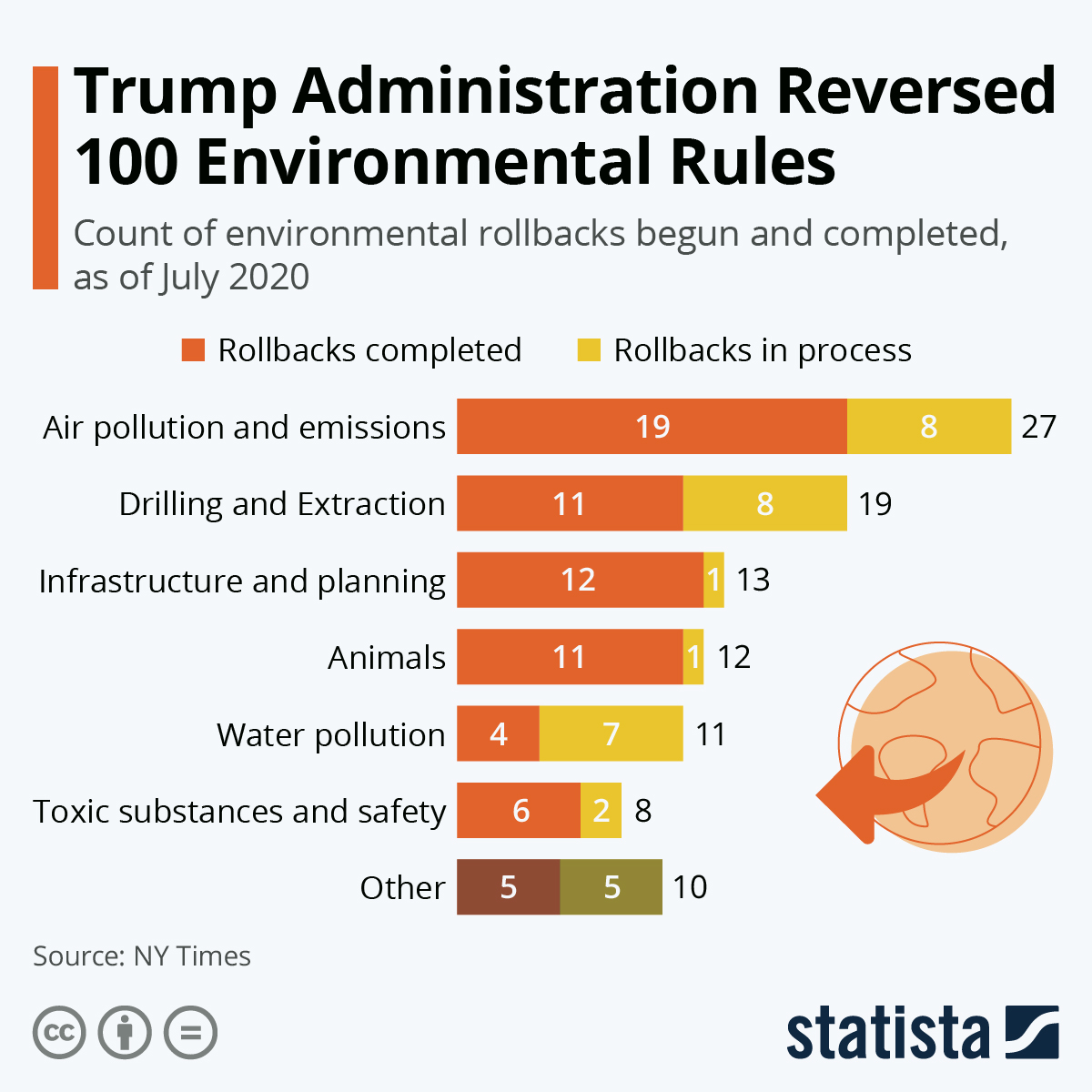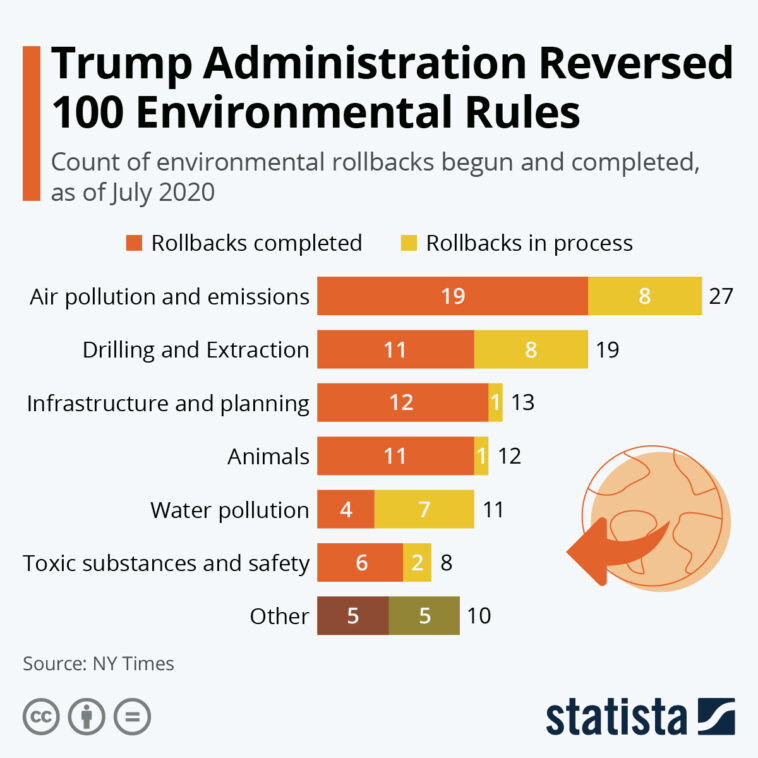
Trump’s Directive and Its Impact on Federal Deregulation
The recent Presidential Memorandum issued by President Donald J. Trump has sent ripples across federal agencies and legal circles alike. In this incisive opinion editorial, we take a closer look at this bold move, its basis in landmark Supreme Court rulings, and the wider implications for American federal governance. By urging agencies to repeal regulations deemed unlawful, the administration has initiated a process that challenges existing regulatory frameworks, while promoting a return to what it considers constitutional governance.
While the memorandum builds on Executive Order 14219—“Ensuring Lawful Governance and Implementing the President’s ‘Department Of Government Efficiency’ Deregulatory Initiative”—it raises many questions about the best way to reconcile modern governance with the foundational principles asserted by the courts. At its core, this directive is both an assertion of executive power and a call to align federal regulation with Supreme Court decisions that have redefined agency authority.
Understanding the Legal Foundation
One cannot discuss President Trump’s revelations without a solid understanding of the Supreme Court rulings that underpin them. Decisions such as West Virginia v. EPA, Loper Bright Enterprises v. Raimondo, and SEC v. Jarkesy have set clear, if challenging, boundaries for regulatory agencies, urging them to follow strict legislative mandates.
Supreme Court Decisions as Guiding Lights
The foundation of this directive rests on a key principle: federal agencies must operate within the confines of the Constitution and legislative intent. In recent years, certain Supreme Court rulings have stirred debates by placing legal limits on the scope of administrative authority. For instance:
- West Virginia v. EPA: A decision that curtailed expansive interpretations of agency power, emphasizing statutory limits.
- Loper Bright Enterprises v. Raimondo: A ruling that questioned excessive regulatory reach and reinforced the principle of separation of powers.
- SEC v. Jarkesy: A case that highlighted the importance of adhering to established legislative guidelines and the rule of law.
These cases, among others, serve as guiding lights for the current memorandum. Agencies are now faced with the challenge of aligning their operational frameworks with these judicial precedents. This is not simply a matter of administrative housekeeping; it is a fundamental rethinking of how executive regulation should operate under the Constitution.
Reviewing Agency Regulations in Light of Court Rulings
The memorandum mandates a thorough review of existing regulations. Federal agencies now have a 60-day window to assess whether their current practices are in line with the Supreme Court’s reined-in interpretations of agency powers. This process involves sorting out the tricky parts and tangled issues that may have developed over decades of bureaucratic evolution.
Key questions in this review include:
- Which regulations exceed the statutory authority granted by Congress?
- How have agencies possibly overstepped their boundaries in interpreting legislative intent?
- What immediate steps are needed to repeal or modify regulations that conflict with established Supreme Court rulings?
This initiative underscores the administration’s intention to create a federal bureaucracy that is both accountable and strictly responsive to constitutional and legislative directives. It is a challenging task that necessitates dissecting complex legal language and anticipating the legal and administrative fallout of any rash decisions.
Rethinking Federal Regulations
The memorandum is more than just a legal statement—it is a policy shift that aims to change the regulatory landscape of the federal government. At the heart of this shift is the pursuit of a more dynamic and competitive economic environment by eliminating or modifying regulations seen as anticompetitive.
Fostering Competition Through Deregulation
One of the most notable aspects of the directive is its clear focus on anticompetitive regulations. The President has asked the Federal Trade Commission (FTC) to lead a government-wide initiative to rationalize federal regulations that hinder competition, innovation, and entrepreneurship. This move is designed to tackle what many consider the nerve-racking and highly complicated pieces of regulatory overreach.
By actively targeting regulations that may stifle economic growth, the administration hopes to create a more level playing field where businesses can thrive without bureaucratic interference. The initiative highlights several key points:
- Encouraging Innovation: Reducing regulatory barriers may foster new ideas and technological advancements.
- Enhancing Efficiency: Streamlined regulation can lead to a more responsive government framework, reducing delays and inefficiencies.
- Protecting Constitutional Limits: By ensuring that agencies adhere to the statutory authority granted by Congress, the government can diminish the risk of overreach.
The administration’s emphasis on fostering competition appeals not only to economic theorists but also to small business owners who often find themselves burdened by what they consider the overwhelming and often intimidating weight of federal regulations.
Implications for Business and Economic Policy
The call for accelerated deregulation is expected to have broad economic ramifications. For proponents of free markets, this initiative is a long-overdue correction that can lead to increased business activity and a more resilient economy. However, critics worry that speeding through the repeal process might lead to unintentional consequences, such as the removal of regulations that, although onerous, serve a protective function in various sectors.
Key issues include:
- Economic Efficiency vs. Regulation: How do we balance the need for speedy deregulation with the need to protect consumers, the environment, and public safety?
- Short-term Gains vs. Long-term Risks: While immediate economic benefits may be realized, the long-term impact of reduced regulatory oversight is a subject of heated debate.
- Political and Legal Uncertainty: Accelerating deregulation without thorough scrutiny may lead to new legal challenges, creating an environment loaded with issues that could lead to litigation and further administrative reviews.
This dual-edged scenario calls for a robust conversation among legal scholars, policymakers, and industry experts. The conversation centers around ensuring that any deregulation is executed in a manner that is legally sound, economically beneficial, and protective of the public interest.
The “Good Cause” Exception and the Repeal Process
Central to this directive is the authorization given to federal agencies to use the “good cause” exception under the Administrative Procedure Act (APA). This provision allows them to bypass the standard notice-and-comment process mandated for rulemaking. While the good cause exception can expedite the repeal of regulations, it also brings with it a level of risk.
Understanding the Good Cause Exception
The “good cause” exception is a legal tool that provides relief from procedural requirements when it is determined that following these guidelines would be overly burdensome or lead to immediate harm. In the context of Trump’s memorandum, it is used to accelerate the repeal of what the administration considers unlawful regulations.
This approach has several key characteristics:
- Speed: Allows agencies to eliminate regulations more rapidly, thus avoiding lengthy bureaucratic delays.
- Efficiency: Seeks to streamline the regulatory framework by removing rules that are inconsistent with recent Supreme Court rulings.
- Controversy: Critics caution that bypassing the standard notice-and-comment process might undermine transparency and public participation.
The use of the good cause exception in this context is a calculated risk. On one hand, it is seen as essential for clearing away regulations that are deemed to be overstepping legal boundaries. On the other hand, it may lead to legal challenges from stakeholders who argue that public input is a critical component of regulatory reform.
Potential Legal and Administrative Challenges
The decision to invoke the good cause exception to bypass typical procedural steps is not without its complications. Some of the most significant concerns include:
- Lack of Transparency: The abbreviated process may result in diminished public oversight and a lack of thorough debate on the merits of existing regulations.
- Judicial Scrutiny: Courts may later be asked to review the legitimacy of using this exception, especially if significant issues arise from the repeal of key regulations.
- Precedent Setting: The expanded use of this exception could set a precedent for future administrations seeking to bypass established bureaucratic norms.
These potential challenges are not merely theoretical. They represent the tangled issues that could arise when balancing the urgency of deregulation against the need for due process and comprehensive public dialogue. Agencies will need to ensure that their actions, while swift, are also backed by a sound legal rationale to withstand future judicial review.
Federal Agencies at a Crossroads
The memorandum places federal agencies in a challenging position. Tasked with a strict 60-day review period, agencies must sift through a plethora of regulations—many with deeply embedded rules and guidelines—to identify those that are no longer compliant with current legal interpretations.
Organizing the Review Process
Federal agencies face the daunting task of sorting through layers of regulations that have accumulated over decades. Here, the focus is not only on repealing what might be considered unlawful regulations but also on ensuring that any changes adhere to the fine points of legislative intent. Some strategies that agencies might adopt include:
- Cross-Departmental Coordination: Ensuring that different agencies share their findings to avoid duplicative efforts and conflicting interpretations.
- Expert Consultations: Engaging legal experts and policy advisors to carefully navigate the confusing bits and subtle parts of regulatory texts.
- Public Feedback Integration: Where possible, incorporating feedback from stakeholders to foster a more inclusive approach even when using expedited procedures.
This coordinated approach is essential, as different agencies may have developed unique interpretations of statutory authority over the years. A joint effort helps to figure a path forward that is consistent across the board, reducing the likelihood of further legal disputes.
Long-Term Implications for Bureaucratic Efficiency
Aside from immediate challenges, there are long-term implications for bureaucratic efficiency and accountability. The memorandum is not just an executive action; it is part of a broader effort to reshape how federal regulation is approached in America.
Key aspects include:
- Streamlined Processes: By eliminating outdated or unlawful regulations, agencies could operate more efficiently, reducing the burdens of compliance and oversight.
- Enhanced Accountability: Reaffirming the need for adherence to constitutional and legislative guidelines may restore public trust, particularly among those who view extensive regulation as a barrier to progress.
- Judicial Consistency: Aligning agency actions with Supreme Court rulings might lead to more consistent judicial outcomes and clearer standards for future regulatory processes.
In the long run, this initiative could prove transformative, subject to the careful balancing of immediate administrative needs with ethical and legal responsibilities. The shift marks an effort to rebuild a federal system that is not only efficient but also reflective of the core principles of American governance.
Balancing Speed and Process in Regulatory Reform
While the administration’s focus on speed is understandable, the need for a well-organized and carefully conducted review remains paramount. The benefit of using the “good cause” exception to speed up the process comes with the inherent risk of planting seeds of controversy due to enhanced legal scrutiny.
Speed Versus Thoroughness: A Delicate Equilibrium
There is an ongoing debate regarding whether the swift repeal of regulations is truly the best approach. On one hand, supporters argue that bureaucratic delays often hinder progress and that using expedited processes allows for rapid correction of unjust or overreaching rules. On the other hand, those wary of such speed caution that important protections may be removed without a comprehensive review.
In managing these tangled issues, it is crucial to strike a balance between:
- Timeliness: Acting quickly to remove outdated or unlawful regulations.
- Due Diligence: Ensuring that every repeal or modification is justified by a clear legal basis and solid evidence.
- Public Accountability: Maintaining transparency and public confidence even when formal procedural steps are abbreviated.
Striking this balance is no small feat. The administration must ensure that in its eagerness to clear regulatory hurdles, it does not inadvertently create a system that is itself controversial and open to further legal challenge. This is a classic example of managing your way through tricky parts where every decision must weigh the immediate benefits against its long-term impact on governance and public trust.
Ensuring Procedural Fairness Amidst Expedited Reforms
With the use of expedited processes, federal agencies are at risk of alienating stakeholders who might feel that their voices are being sidelined. The traditional notice-and-comment period has served as a critical forum for public participation in rulemaking. Its bypass in this instance may raise questions about the democratic legitimacy of the reforms.
To address these concerns, agencies might consider:
- Supplemental Public Consultations: Even after using the good cause exception, seeking post-repeal input to refine and adjust policies as necessary.
- Transparent Reporting: Making detailed reports available that explain each regulatory repeal and the underlying legal rationale.
- Periodic Review: Instituting a follow-up mechanism that allows for the re-examination of repealed or modified regulations in light of new information or unforeseen consequences.
These measures can help smooth over the suddenness of the changes, ensuring that while agencies are finding their path quickly, they do not lose sight of the importance of transparency and public engagement. It is about taking the wheel in a way that is both fast and fair.
The Role of Judicial Oversight in a Deregulated Environment
In the wake of these sweeping changes, the role of the judiciary is more critical than ever. As agencies revise and repeal regulations, courts will undoubtedly be called upon to interpret the legality of those actions. Recent Supreme Court rulings have set the stage for a heightened level of judicial scrutiny, and this initiative is likely to be no exception.
Judicial Review of Agency Actions
The courts may be asked to review several facets of the administration’s directive. These include:
- Application of the Good Cause Exception: Courts could evaluate whether bypassing the full notice-and-comment process is justified under the current circumstances, weighing expedience against thoroughness.
- Constitutional Adherence: The extent to which federal agencies have adhered to constitutional principles and legislative mandates will be scrutinized, especially in cases where significant public interests are at stake.
- Precedent and Consistency: The manner in which agencies interpret and implement the directives may set important precedents that shape future regulatory policies.
These judicial reviews are essential for ensuring a system that is not arbitrarily managed. The courts have a duty to step in if an agency’s actions are seen as excessively off-track or if the expedited process leads to regulation dismantling that conflicts with long-standing public safeguards.
The Balance Between Legislative Intent and Executive Action
One of the enduring debates in American governance is how to balance the intentions of Congress, as reflected in the laws passed, with the initiatives taken by the executive branch. In this case, President Trump’s directive is a direct call for agencies to remove regulations that exceed the statutory authority granted by Congress. Yet, this bold move also risks upsetting established legal norms and inviting renewed legislative debate.
Key considerations in this balancing act include:
- Clear Legislative Mandates: Agencies must meticulously parse through statutes to determine which regulations clearly overstep their bounds.
- Executive Discretion: The President’s authority to direct agencies is well-established, but its limits become murkier when significant changes are made in a short timeframe.
- Legislative Oversight: Congress, as the primary lawmaking body, retains the power to reassert its will if deregulation is seen as going too far or undermining statutory protections.
This tug-of-war is characterized by a series of difficult decisions and subtle details. While the aim is to streamline governance, the process will require both careful legal analysis and a willingness to accept the potential trade-offs inherent in rapid administrative reform.
Implications for Future Regulatory Policy
The current directive is unlikely to be an isolated incident but part of a broader movement aimed at reshaping the regulatory state. Its implications extend beyond immediate changes to shape future policy debates and establish new benchmarks for administrative action.
Setting a New Precedent in Administrative Law
If the expedited repeal process and reliance on the good cause exception are validated through judicial review, it could lead to a shift in how entrenched regulations are managed. Future administrations may be emboldened to take equally swift measures, changing the approach to bureaucratic management across the board.
The potential long-term impacts include:
- Redefined Agency Authority: Clearer limits on agency power may emerge, providing a more solid framework for both regulatory and deregulatory actions in the future.
- Emphasis on Constitutional Compliance: A stronger focus on conforming to legislative intent and constitutional guidelines could reshape the educational and practical training of federal regulators.
- Increased Judicial Involvement: With more legal challenges expected, judicial oversight might become a recurring feature of regulatory reform, influencing the balance between fast-paced administrative actions and the need for public and legal review.
These changes are expected to have a ripple effect throughout the federal bureaucracy, influencing policy decisions in areas ranging from environmental regulation to financial oversight. Over time, this approach could lead to a federal system that is arguably more agile, but also potentially more vulnerable to cyclical shifts in political priorities.
Comparative Perspectives: Deregulation in Other Democracies
It is useful to take a moment to compare this initiative with deregulation efforts in other democratic nations. In many countries, the balance between effective regulation and excessive administrative control is an ongoing debate. Many leaders have adopted measures to reduce burdensome laws while maintaining a system that protects public interests.
When exploring these viewpoints, several key lessons emerge:
| Country | Approach to Deregulation | Impact on Governance |
|---|---|---|
| United Kingdom | Emphasis on reducing red tape and streamlining processes | Generally positive, though concerns about oversight remain |
| Canada | Regular reviews of regulation for compliance and efficiency | Balances economic freedom with robust public policy reviews |
| Australia | Utilizes accelerated measures for removing outdated regulations | Often successful, though sometimes facing public criticism |
These examples provide a perspective on how deregulation efforts, while aimed at improving economic efficiency, can also lead to unintended consequences if not carefully managed. It is a cautionary tale that highlights the importance of carefully weighing each decision against both immediate and long-term impacts.
Reflecting on the Rule of Law and Governance
At its heart, this directive is an assertion of the rule of law—ensuring that federal actions remain squarely within the realms defined by the Constitution and legislative will. While the initiative is, in many respects, a push to reduce overwhelming bureaucratic influence, it also comes with the inherent tension between speedy action and meticulous legal review.
Ensuring Constitutional Governance in Challenging Times
The essence of the President’s memorandum is to bring agency actions into line with key Supreme Court precedents. In doing so, it calls for a serious reappraisal of long-standing regulations, many of which may have evolved into unrecognized obstacles over time.
This effort is critically important for several reasons:
- Reaffirming Legislative Authority: By targeting regulations that exceed the powers granted by Congress, the initiative reasserts the primacy of legislative intent in American governance.
- Protecting Citizen Rights: Ensuring that agencies act within the bounds of constitutional protections helps guard against potential overreach that could negatively affect individual freedoms.
- Maintaining Systemic Balance: A rebalanced approach to regulation reinforces the separation of powers, providing stability in a system that is prone to the influences of shifting political winds.
Even as the administration pushes forward with this ambitious agenda, it must remain cautious, taking care not to sacrifice the public’s trust in the regulatory system. Balancing speed, efficiency, and fairness is essential in a landscape where both the executive branch and the judiciary play critical roles in shaping the future of governance.
The Ongoing Debate: Legal Reforms and Political Ideologies
Legal reforms of this magnitude invariably become entangled with political ideologies. While the memorandum is presented as a measure to improve governance by adhering strictly to legal precedents, critics argue that it may be politically motivated, serving to advance a particular ideological agenda. These debates are characterized by several subtle details that feed into broader ideological narratives, including:
- Government Overreach vs. Government Efficiency: Debate over whether extensive regulations impede economic activity or protect citizens from potential abuses.
- The Role of Courts: Discussion over whether the judiciary should continue to serve as the ultimate arbiter of agency power or whether more deference should be given to executive actions.
- Transparency in Government: Evaluations of how far the government should go in bypassing traditional public input processes in the name of efficiency.
These debates are complex and touch on many issues that are full of problems yet central to the American political experience. As this regulatory battle unfolds, it is essential for all stakeholders—from legal scholars to everyday citizens—to understand the potential long-term ramifications and engage in thoughtful dialogue about the future of American governance.
Conclusion: Charting a Path Forward in a Changing Regulatory Landscape
President Trump’s directive to repeal regulations deemed unlawful under recent Supreme Court decisions represents a significant moment in the history of American federal governance. It is an initiative that aims to reestablish a system where agencies act firmly within the strict confines of constitutional and legislative mandates, and it proposes a faster track for deregulation by employing the “good cause” exception.
While the memorandum promises to address many of the confusing bits and tangled issues that have accumulated in the regulatory arena, it also invites careful scrutiny and robust debate. The balance between rapid administrative action and the need for thorough, transparent review is delicate and will likely continue to be a subject of intense legal and political discussion in the months and years to come.
In closing, the directive stands as a pivotal test of how effectively the federal bureaucracy can recalibrate itself to respect well-established legal boundaries while adapting to the demands of a modern, competitive economy. Whether this initiative will ultimately lead to a more efficient and constitutionally grounded regulatory system remains to be seen. Regardless, it is clear that the conversation surrounding federal deregulation is set to play a critical role in shaping the future of American law and governance.
As stakeholders and citizens alike dig into this policy change, there is much at stake—not only in terms of immediate regulatory reform but also in the broader implications for the rule of law, economic policy, and the lasting balance between legislative authority and executive action. By taking a closer look at the key elements of this initiative, we can better appreciate the challenges and opportunities that lie ahead in navigating the intricate, off-putting, and often overwhelming twists and turns of federal governance.
Originally Post From https://www.shockya.com/news/2025/04/26/trump-directs-agencies-to-repeal-unlawful-regulations-based-on-supreme-court-decisions/
Read more about this topic at
Tracking regulatory changes in the second Trump …
Fact Sheet: President Donald J. Trump Directs Repeal of …


